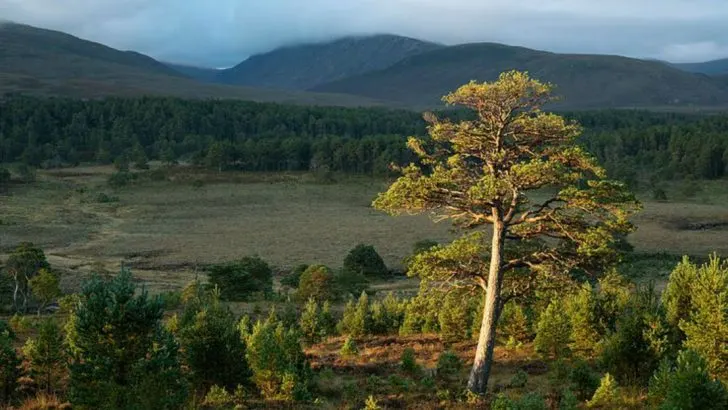Some evergreens are divas in disguise. You plant them for year-round beauty… and end up with a garden full of regret, sap, and endless cleanup. The truth? Not all evergreens are your friends. Some stay stunning through snowstorms and summer heat. Others drop needles like they’re being paid by the pound and demand more pruning than a topiary contest. We’re spilling the dirt: 12 evergreen trees that stay gorgeous with barely a fuss—and 6 that look good for a minute, then wreck your weekends. Pick the right ones, and your yard will look sharp all year. Pick wrong, and you’ll be stuck with a broom, a rake, and a slow-burning grudge.
Blue Spruce
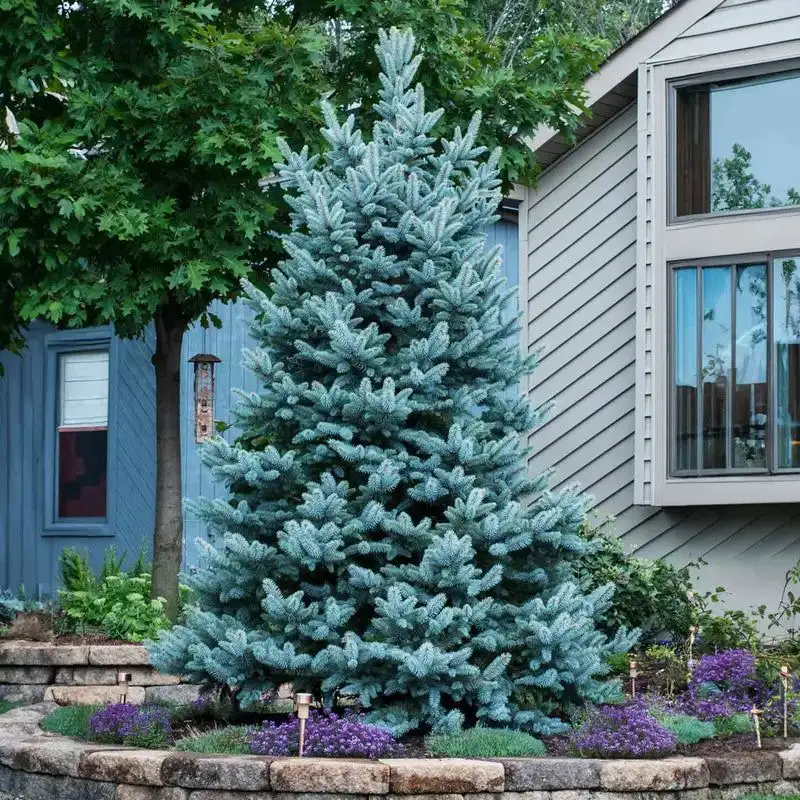
Known for its striking silvery-blue needles, the Blue Spruce is a favorite in landscapes. Its symmetrical form and vibrant color make it a standout. Although it’s slow-growing, the Blue Spruce can reach impressive heights. This tree is hardy and tolerant to various conditions, thriving in cold climates.
Despite its beauty, it requires space to grow, as overcrowding can lead to needle drop. The Blue Spruce’s allure makes it a popular choice for those seeking a majestic evergreen with minimal fuss. Once established, it provides a stunning focal point in any garden.
Douglas Fir

The Douglas Fir, a symbol of the Pacific Northwest, is cherished for its dense, lush foliage and towering stature. Its soft, green needles and conical shape make it a picturesque addition to landscapes. Known for its strength, it serves as a popular choice for Christmas trees.
This evergreen thrives in well-drained soil and requires sufficient sunlight. Properly cared for, it can live for hundreds of years. The Douglas Fir’s robust nature and timeless beauty make it a beloved classic. However, it requires regular pruning to maintain its shape and promote healthy growth.
Eastern Red Cedar

The Eastern Red Cedar is not only resilient but also versatile. Its reddish-brown bark and lush foliage provide year-round interest. This tree is highly tolerant of drought, making it ideal for less hospitable sites.
Birds love its berries, making it a wildlife-friendly option. While the Eastern Red Cedar thrives with minimal care, it can become invasive if not managed properly.
Plant it in an open area where it can grow freely. Its aromatic wood is valued for furniture and cedar chests, adding another layer of appeal to this hardy evergreen.
Holly
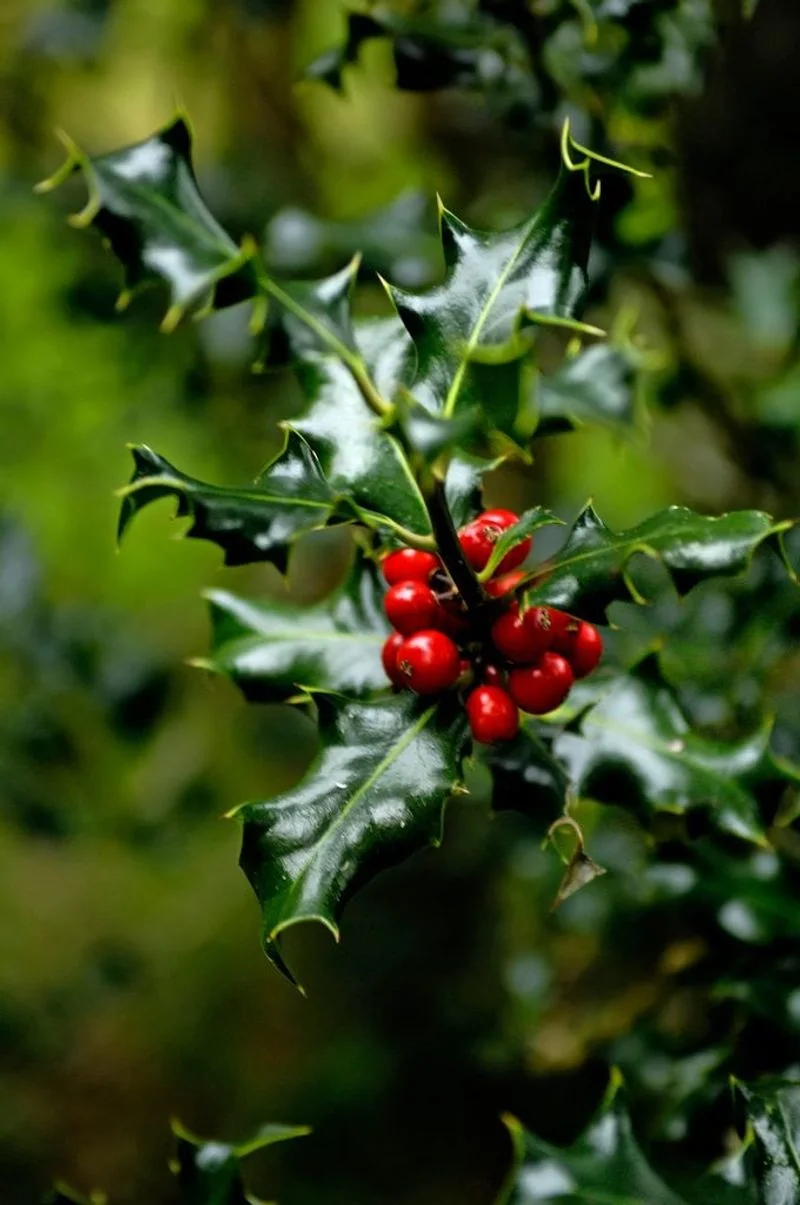
Holly trees are cherished for their glossy leaves and vibrant red berries, often associated with holiday decor. These evergreens bring festive charm to any garden. They’re adaptable, thriving in various soil types, and require minimal maintenance.
Holly trees provide excellent privacy hedges due to their dense foliage. However, they need regular pruning to keep a tidy appearance. Their berries attract birds, adding to their ecological value.
While generally low-maintenance, holly trees can be susceptible to leaf spot diseases. With proper care, they bring lasting beauty and a splash of color to landscapes.
Scots Pine
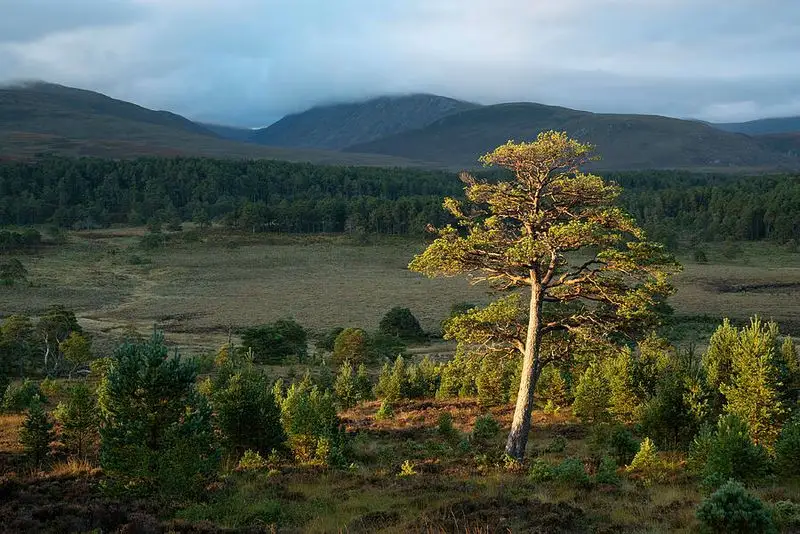
Scots Pine, known for its distinctive orange-brown bark, is a robust and adaptable evergreen. Its needles form dense clusters, providing excellent cover and shade. This tree thrives in poor soils and withstands cold climates, making it popular in diverse landscapes.
While it grows rapidly, regular pruning helps maintain its shape and health. Scots Pine is widely used in reforestation projects due to its resilience.
However, it can become a maintenance challenge if not properly managed, as it may overgrow its space. Its unique appearance and adaptability make it a worthwhile addition to any garden.
Japanese Black Pine

The Japanese Black Pine is admired for its sculptural form and dark, twisted needles. It often graces Japanese gardens and coastal landscapes. This tree thrives in sandy soils and tolerates salt spray, making it ideal for seaside locations.
Its rugged beauty is accentuated by its irregular shape, adding visual interest. Although it requires minimal care, it’s essential to monitor for pests like pine wilt nematodes.
To maintain its health, occasional pruning and attention to soil conditions are beneficial. The Japanese Black Pine’s striking silhouette offers a distinctive touch to any setting.
Austrian Pine
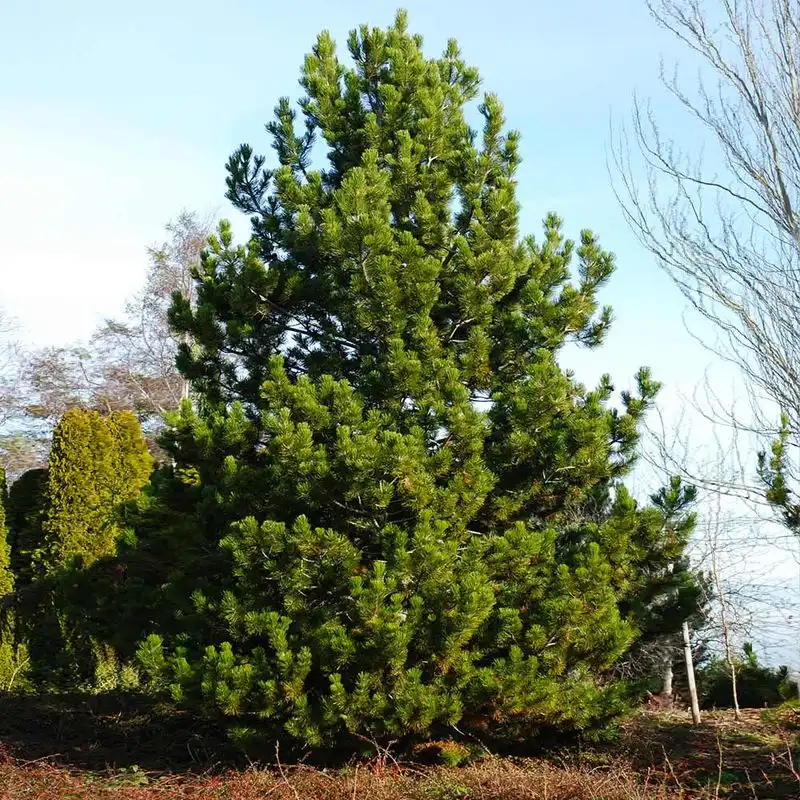
Austrian Pine is celebrated for its resilience and strong, dark green needles. Its robust nature allows it to withstand various environmental stresses, including pollution, making it suitable for urban environments.
This evergreen grows well in poor soil conditions and offers excellent windbreak capabilities. Despite its strengths, it requires proper spacing to prevent overcrowding.
Austrian Pine can be susceptible to pine wilt, necessitating regular inspection. Its sturdy appearance and ability to thrive in challenging conditions make it a popular choice for those seeking a reliable evergreen.
Leyland Cypress
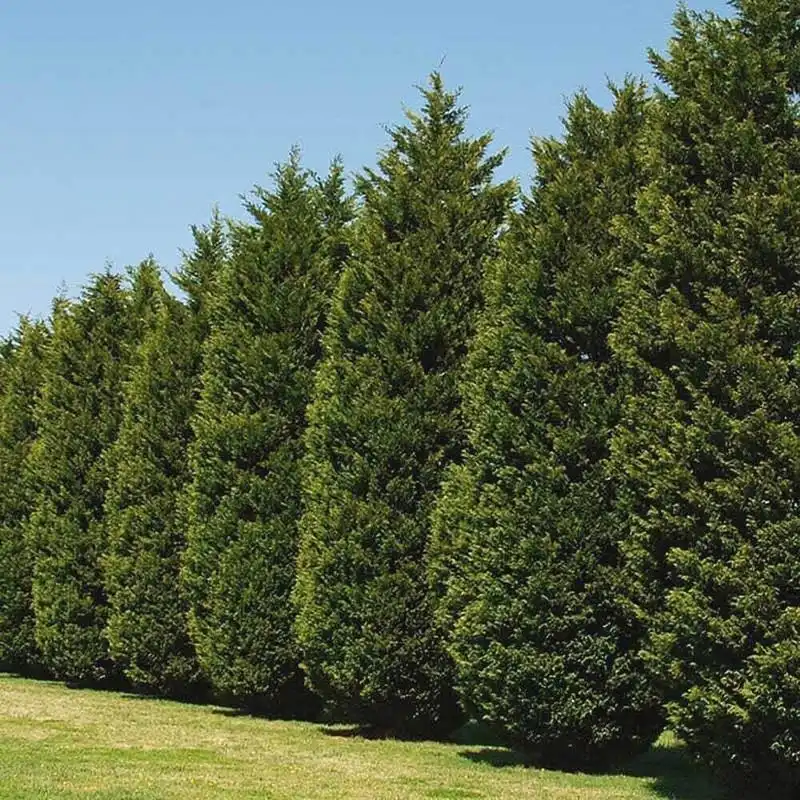
The Leyland Cypress is favored for its rapid growth and dense foliage, making it an excellent choice for privacy screens. Its dark green needles form a thick barrier against noise and wind.
This tree adapts to various soil types and requires minimal maintenance once established. However, its fast growth rate can lead to issues like root stress if not properly managed.
Regular trimming helps maintain its shape and health. The Leyland Cypress’s ability to quickly create a lush, green wall makes it a staple in suburban landscapes needing privacy and wind protection.
Norway Spruce
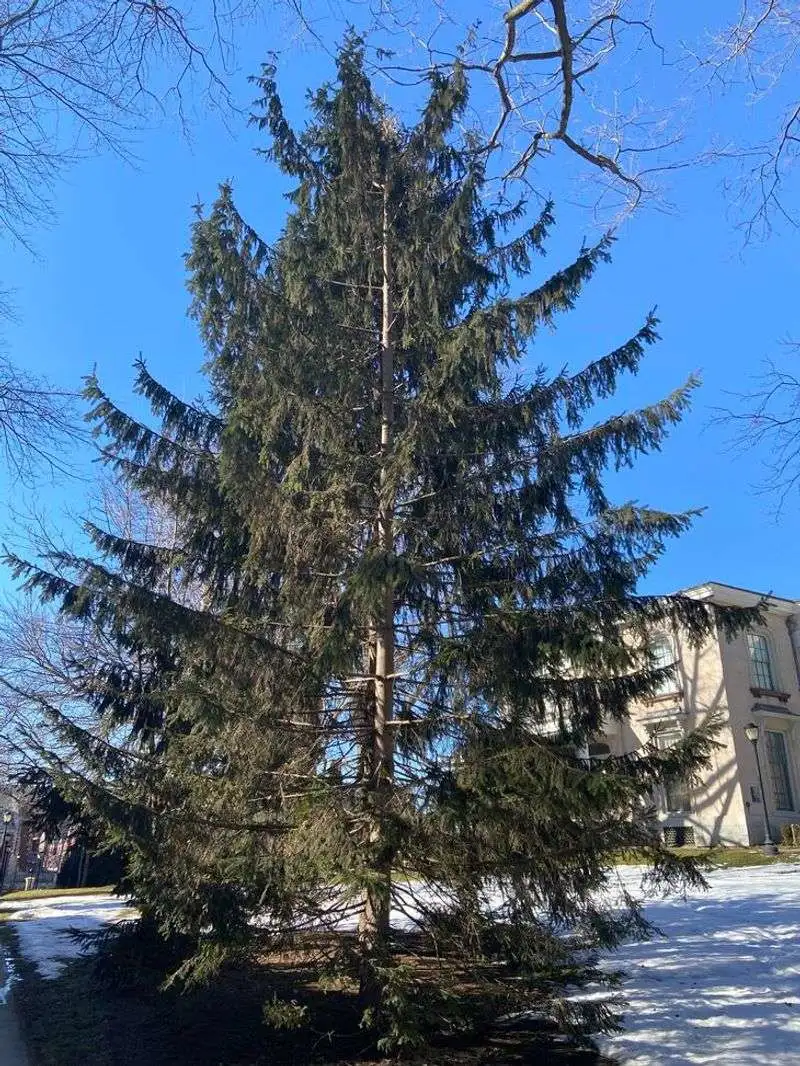
Norway Spruce is iconic for its towering presence and dark green needles, often used as a classic Christmas tree. Its rapid growth and dense foliage make it a popular choice for large landscapes.
This evergreen thrives in well-drained soils and is relatively low-maintenance. However, it requires sufficient space to grow properly, as it can reach significant heights.
Norway Spruce is susceptible to pests like aphids, necessitating regular monitoring. With its impressive stature and traditional appeal, it remains a favorite for those with expansive garden spaces.
White Pine
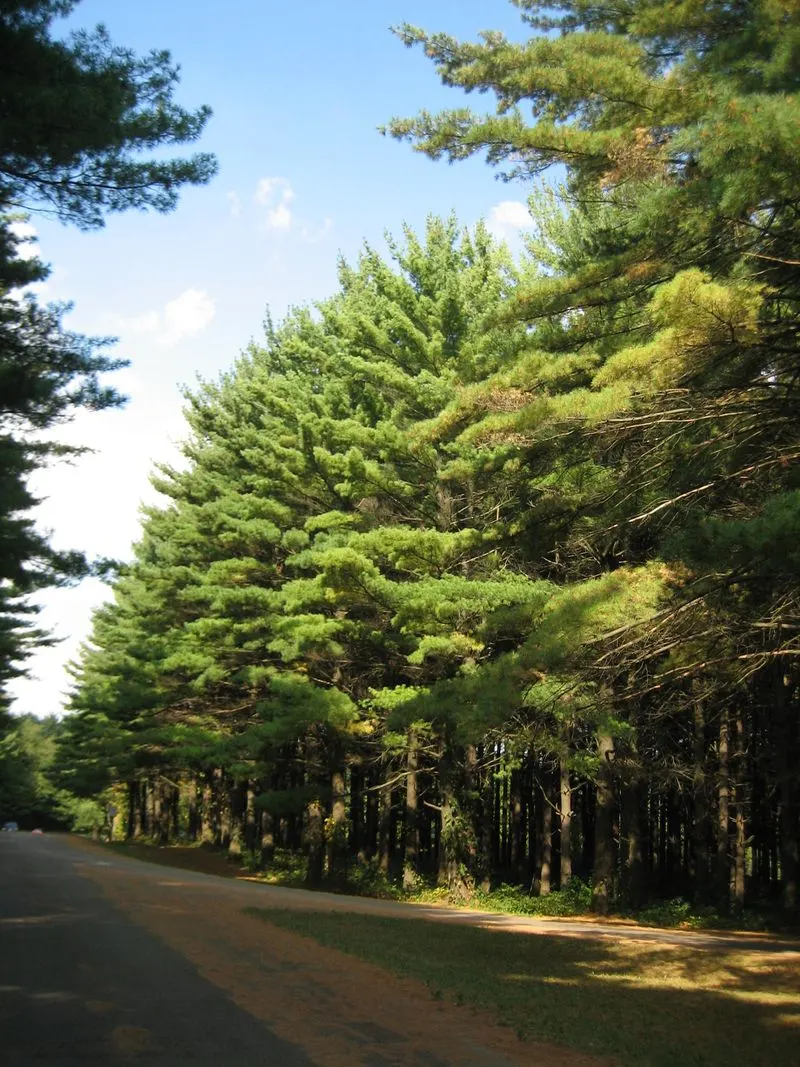
The White Pine is known for its soft, feathery needles and tall, straight trunk. Its graceful appearance adds elegance to any landscape. This tree thrives in cooler climates and adapts to various soil conditions.
While generally low-maintenance, young White Pines require protection from strong winds. Regular pruning helps maintain their shape and promotes healthy growth.
White Pines offer excellent windbreak capabilities and are often used in reforestation efforts. Despite their elegance, they can become a maintenance challenge if not properly cared for, as they are prone to pests like the white pine weevil.
Cedar of Lebanon
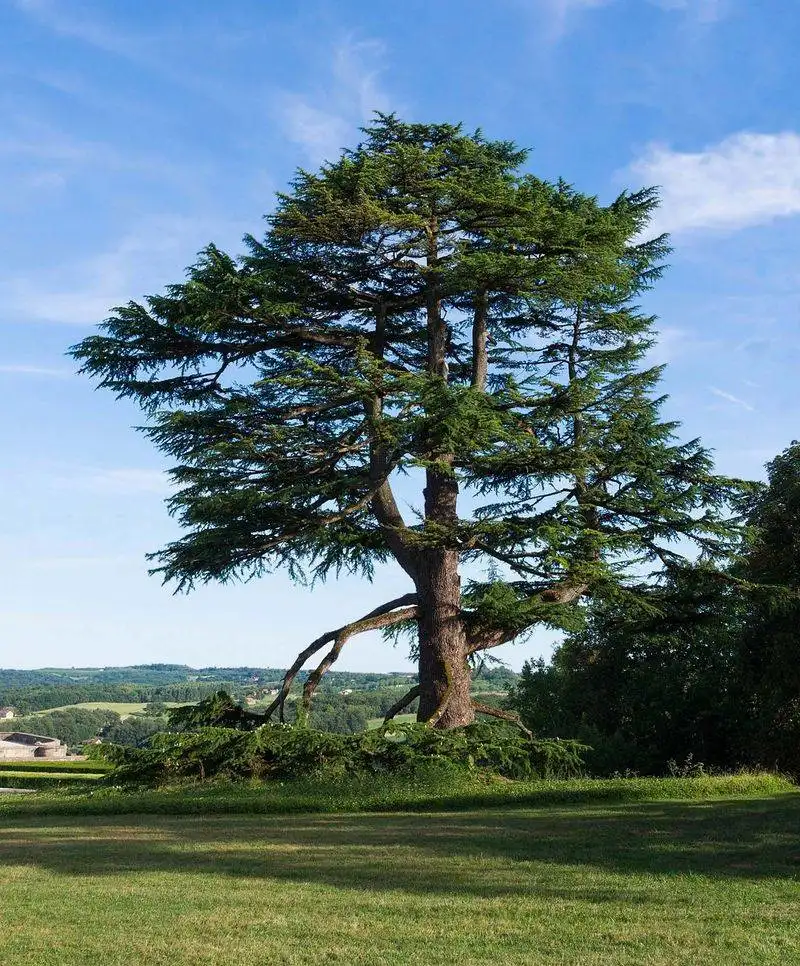
Cedar of Lebanon is known for its majestic presence and historical significance. Its wide, spreading branches and dense foliage provide ample shade and beauty. This tree thrives in well-drained soils and is resistant to drought.
Cedar of Lebanon requires plenty of space to grow due to its expansive size. While generally hardy, it can be susceptible to root rot in poorly drained soils.
Its wood is highly valued for construction and furniture, adding to its allure. With its ancient history and grandeur, the Cedar of Lebanon remains a symbol of strength and longevity.
Juniper
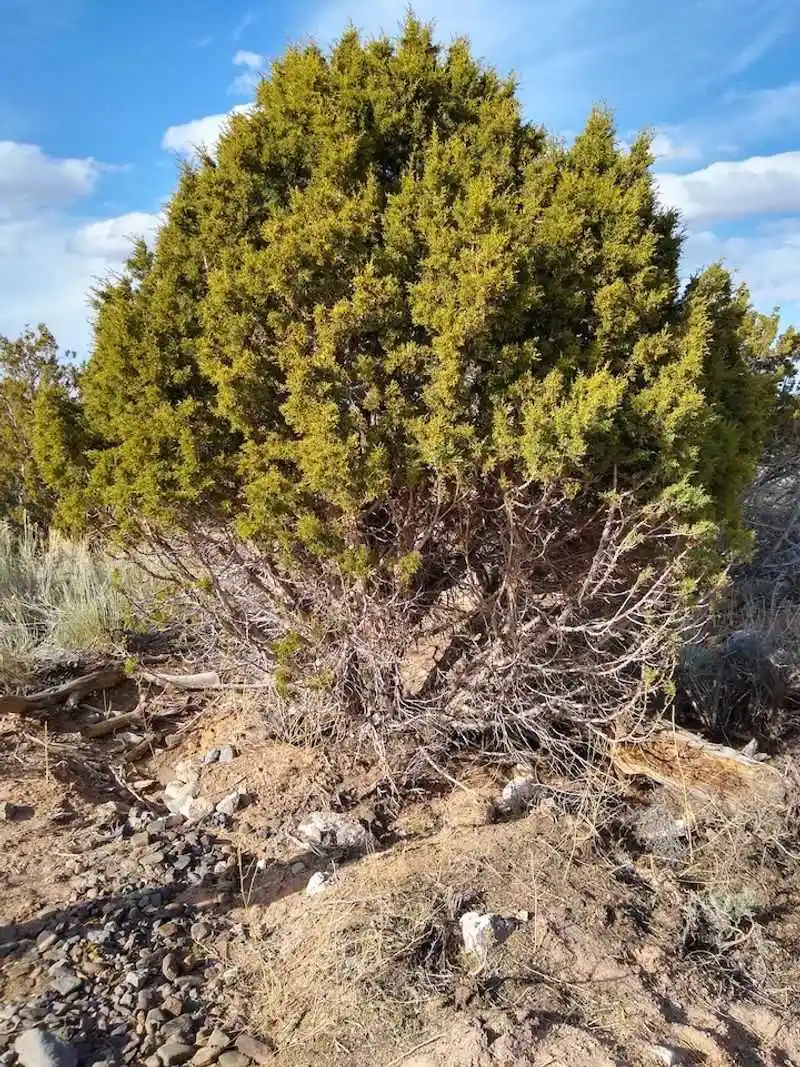
Juniper trees, with their bright blue-green foliage, are versatile and hardy. Their unique appearance and aromatic berries make them a popular choice in landscapes. Junipers thrive in rocky soils and require minimal water, ideal for xeriscaping.
These evergreens provide excellent ground cover and are highly tolerant of drought. However, they can become invasive if not managed properly, requiring regular pruning to control their spread.
Junipers are also deer-resistant, adding to their appeal for garden use. Their resilience and distinctive look make them a reliable choice for challenging sites.
Lombardy Poplar
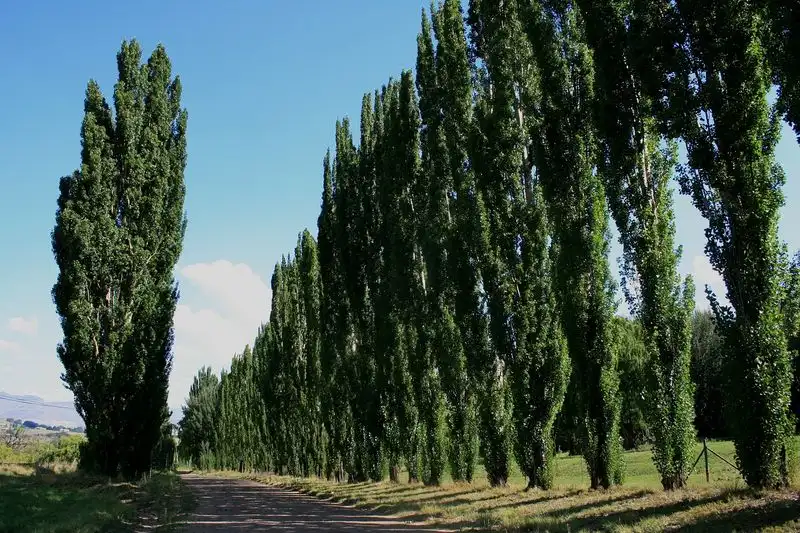
Lombardy Poplar, with its tall and narrow form, is often used to line roads and paths. The slender trunks and bright green leaves offer a striking vertical element to any landscape.
Though visually appealing, Lombardy Poplars can become a maintenance nightmare. They grow rapidly, leading to weak wood and susceptibility to disease, particularly cankers and rusts.
Their invasive root systems can cause damage to infrastructure. While their towering presence is unmatched, the constant need for care and monitoring often outweighs their aesthetic benefits.
Silver Maple

Silver Maple trees are known for their fast growth and silvery underside of leaves, adding a shimmering quality to landscapes. Often planted for shade, they can reach impressive heights.
However, their rapid growth results in brittle wood, making them prone to storm damage. The shallow, invasive roots can disrupt nearby structures and pavements.
Regular pruning and careful placement are crucial to manage their growth. While their beauty is undeniable, the challenges they present often lead to regret for those unprepared for their maintenance demands.
Weeping Willow
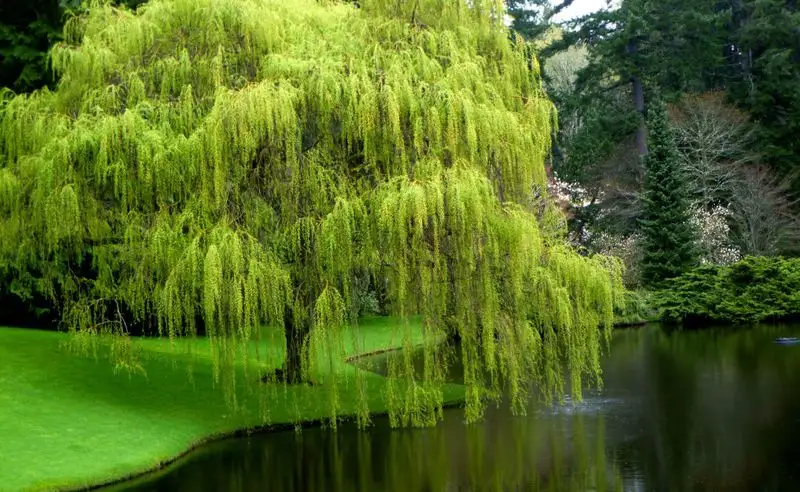
The Weeping Willow is instantly recognizable with its long, cascading branches and elegant silhouette. Often found near water, its graceful form adds serenity to any setting.
Despite its beauty, the Weeping Willow can become a maintenance headache. Its extensive root system can invade plumbing and septic systems, causing significant damage.
The brittle branches require regular pruning to prevent breakage. While it offers a picturesque scene, the potential for costly repairs often makes the Weeping Willow a tree best admired from a distance.
Empress Tree
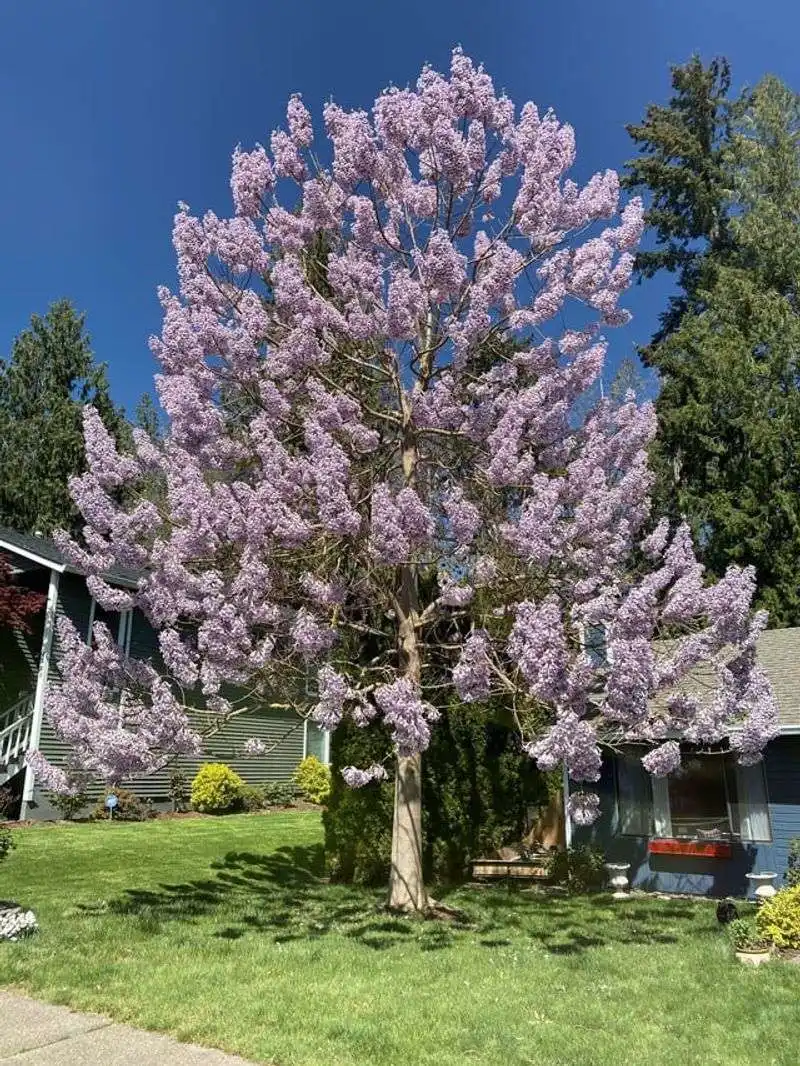
The Empress Tree is celebrated for its rapid growth and spectacular purple blooms. Its large, heart-shaped leaves provide ample shade, making it a popular choice for quick landscaping.
However, its aggressive growth can lead to problems. The brittle wood is susceptible to storm damage, and its invasive roots can disrupt structures.
It often requires frequent pruning to manage its size. While the Empress Tree offers stunning visual appeal, its demanding nature and potential for infrastructure damage often outweigh its benefits, making it suitable only for expansive, open areas.
Chinese Elm

Chinese Elm, with its umbrella-like canopy and textured bark, adds elegance to gardens. It’s known for its resilience and ability to adapt to urban environments.
While it provides excellent shade and is easy to grow, it can become a maintenance burden. The tree’s fast growth leads to weak branches susceptible to breaking.
Its roots can also become invasive, damaging sidewalks and foundations. Regular monitoring and pruning are essential to maintain its health. Though appealing, the potential maintenance issues make the Chinese Elm a challenging choice for residential gardens.
Monkey Puzzle Tree

Known for its striking, prehistoric appearance, the Monkey Puzzle Tree captivates with its stiff, spiraled branches. Originating from Chile, this evergreen demands attention in any landscape.
Despite its intriguing look, it grows slowly, reaching heights of up to 70 feet over many decades. Its prickly leaves deter pests, making it relatively low-maintenance.
However, its large size and unique needle-like leaves can present challenges during cleanup. A fun fact: the name “Monkey Puzzle” came about in the 1850s when someone remarked that a monkey would struggle to climb it.

